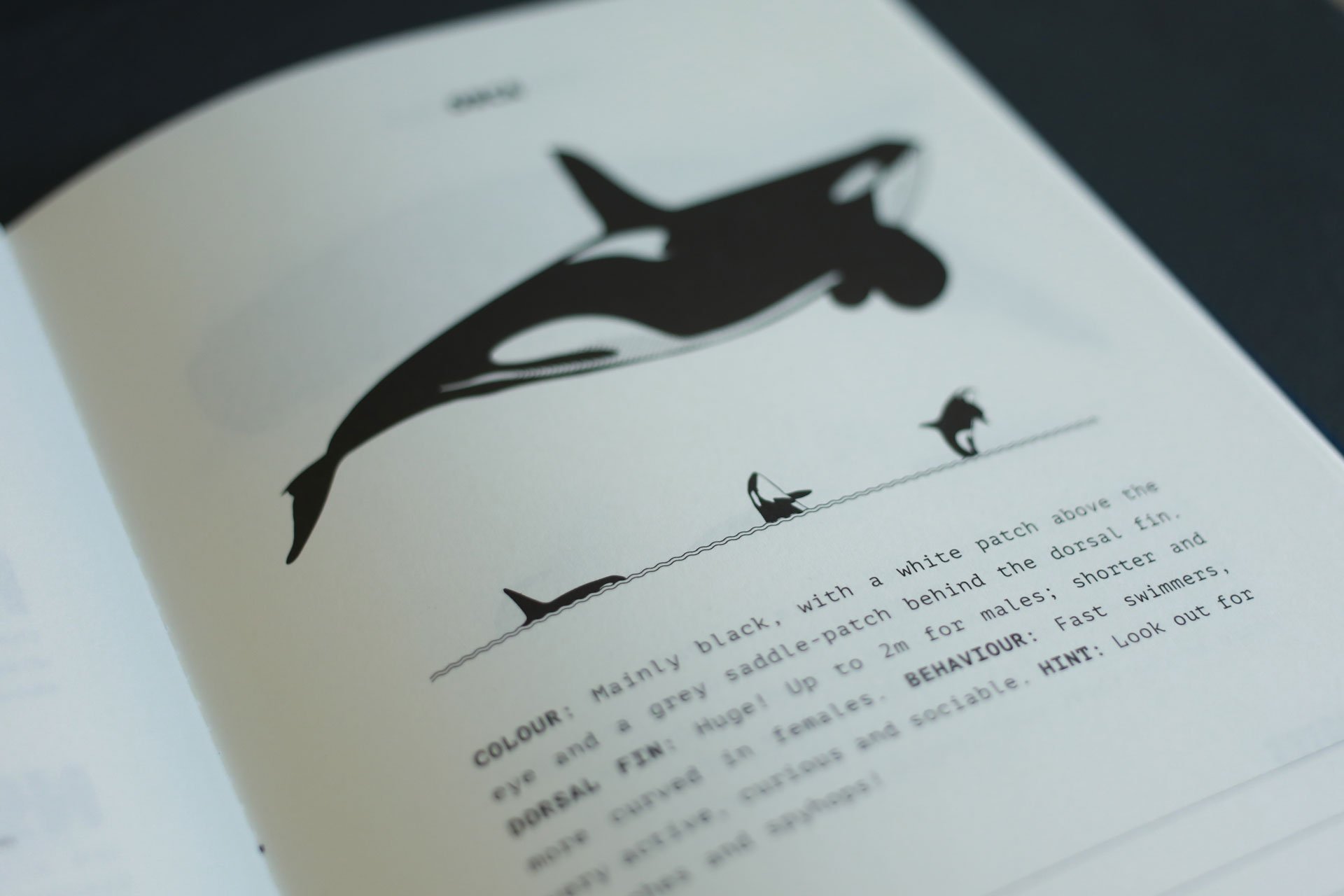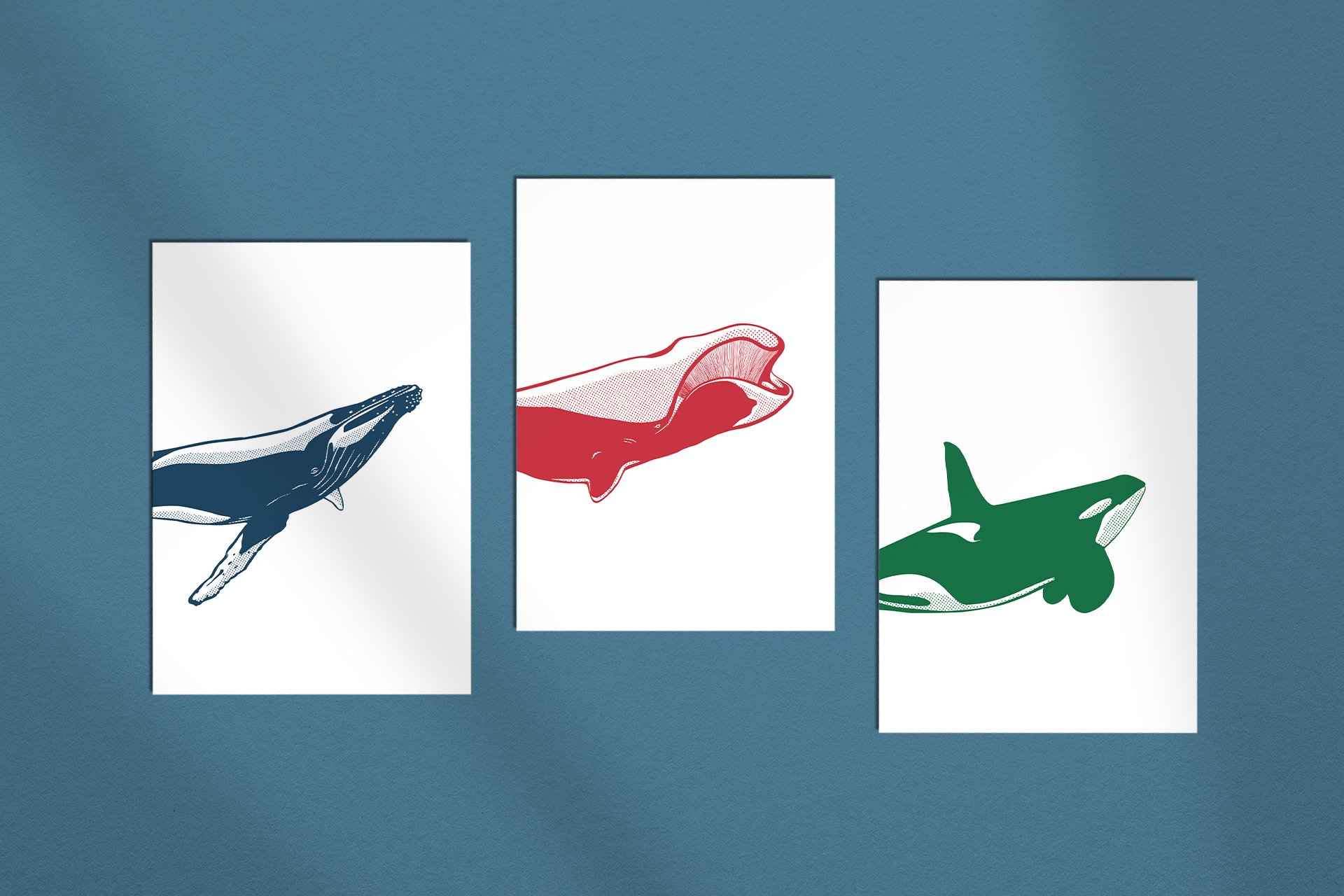BLUe WhALEs
The largest animals of all Time. A good place to meet them is off the Azores, in Quebec and Mexico.
Photo: Oliver Dirr / Whaletrips
REVIEW: Blue Whales
Blue whales are the largest and heaviest animals that have ever lived on the planet – and that includes all known dinosaurs.
One of the best things about whales is without question their pure, sheer, unbelievable size. That very moment these massive giants suddenly emerge from the depths. And in this respect, the best whale of all is the blue whale.
The blue whale is the largest animal that has ever lived on earth. Yes: ever, including all dinosaurs. In fact, it weighs more than twice as much as the largest dinosaurs, up to 190 tonnes. I did the maths, 190 tonnes, that's about as much as an empty Boeing 757, ten mid-range cars, twenty elephants and one hundred people – put together.
On average, a blue whale reaches a length of 26 metres, the longest measured so far even came to 33 metres, which is about as long as three school buses parked generously one behind the other. A standard zodiac boat, which is often used on whale-watching tours, is just 4 to 8 metres in comparison.
The fluke of a blue whale alone is about the same size as a zodiac. It's good to know that blue whales are not at all interested in zodiacs or humans. They normally just swim along slowly and relaxed with a resting heart rate of around 4 to 6 heartbeats per minute.
“The heart of a blue whale is as big and heavy as a small car, a child could swim in its aorta, and its tongue, which alone is as heavy as an entire elephant (!), could hold half a school class.”
Basically, blue whales have only one interest: Krill. All day long, it's all about krill. And here, too, it's all about taking it easy. Blue whales pursue their prey by plunging into schools of krill or fish (usually from below) with their mouths wide open and skimming off anything edible with their huge baleen. In this way, they manage to eat 5 to 8 tonnes of food per day with little effort. Record.
Other super records: the heart of a blue whale is as big and heavy as a small car, a child could swim in its aorta, and its tongue, which alone is as heavy as an entire elephant (!), could hold half a school class. As already mentioned: blue whales are huge.
Three school buses parked in a row: that's about the length a full-grown blue whale can reach.
And blue whales are not only the largest and heaviest animals in the world, they are also among the loudest. Under water, a blue whale can produce volumes of up to 180 decibels. During a Motörhead concert in the 90s, it was just about 120, the record is held by Manowar with 139 decibels – so, noise-wise, a metal concert is nothing compared to a blue whale. The only animal that can get even louder is the sperm whale – their clicks have been measured at 236 decibels!
The low-frequency sounds of blue whales are so loud that, according to some experts, they could even reach from pole to pole, the full 20,000 kilometres, if the numerous obstacles on the way did not stop them. But even so, blue whales can probably communicate with each other over hundreds and thousands of kilometres, as long as the increasing man-made noise in the sea allows it.
And that in turn is very practical, because firstly blue whales are loners and secondly there are unfortunately hardly any left. Due to massive whaling in recent centuries, blue whales are extremely endangered: there are only a few thousand left worldwide. Nevertheless, you still have a good chance of seeing them in a few places around the world.
Photo: Oliver Dirr / Whaletrips
Size
Blue whales grow to a length of 24 to 33 metres, females are usually larger than males. Weight: up to 190 tonnes.
Colour
Anthracite, slate grey, blue-grey, the colours vary. Blues are best recognized by their grey to white speckles.
FORM
Huge, long body with a broad, flat, U-shaped head that can take up to a quarter of its length.
Blow
Very high and narrow blow, reaching 8 to 12 metres and higher, can be seen from very far away.
Fin
Very far back, very small, sometimes pointed, sometimes crescent-shaped, sometimes only a small bump.
FLUKE
Very wide fluke, about a fifth of the body length. Trailing edge with pointed ends, massive tail from the side.
Behaviour
Indifferent to boats, swims slowly at the surface. Rarely lifts its fluke when diving.
Dives
Blauwale tauchen meist für ca. 10 bis 30 Minuten.
Numbers
There are probably between 8,000 and 12,000 animals left worldwide.
Photo: Oliver Dirr / Whaletrips
CHECKLIST: Blue Whales
Blue whales are so long that blow and fin are never seen above water at the very same time. When diving, only every fifth blue whale lifts its fluke, some never do.
Blue whales usually travel alone, sometimes in pairs, rarely in large numbers. They normally swim slowly along the surface and are fairly indifferent to boats. Their normal travelling speed is between 5 and 15 km/h, slightly less when feeding, but they can reach speeds of up to 30 km/h when on the run.
Blue whales usually surface at a rather flat angle, as soon as the head is at the surface you can see (and hear!) the huge blow, then the head already dives back down and a large part of the enormously long back becomes visible. In this way, the whale will go up and down for several breaths without you even seeing the fin, which sits much further down the back.
“Taller than a house with several storeys: The blow of a blue whale is easily recognizable, even from great distances.”
Only when the blue whale dives again for a longer period of time - recognizable by a loud last blow and a clear bend of the back - does the fin become visible on the surface. During deeper dives, the fluke can sometimes be seen, but it usually remains under water, as blue whales dive up and down at a fairly flat angle.
Only one in five blue whales ever show their fluke, and some never do. Apart from that, blue whales are not particularly active on the surface: they rarely breach, rarely spy-hop and rarely slap the water with their flukes or flippers. They simply heave their gigantic bodies calmly through the water. Impressive enough.
Photo: Oliver Dirr / Whaletrips
Where and when: Blue Whales
As blue whales are extremely rare, there are not too many places where you are likely to encounter them. On the other hand, their annual migration routes are well known.
Blue whales usually migrate back and forth between tropical and polar waters, but they can theoretically be found in all the world's oceans. In summer they forage in the cooler waters, in winter they give birth to their calves in the warmer waters.
In the western Atlantic, blue whales can be found in the waters from Greenland to Quebec and down to New England, with the best chances on the east coast of North America in the Gulf of St Lawrence in Quebec, where there is a population of over 400 blue whales.
In the eastern Atlantic, blue whales are mainly found off the Azores (spring) and Iceland (spring and summer) when they are on their way north and stop off close to the coast to hunt. Nevertheless, you need a bit of luck: there are only a few hundred animals left in the entire North Atlantic.
The ideal companion for your next whale trip: In our shop you will find our TRAVEL NOTES in five great colours – with the most important whale information for your trip and plenty of space for your own notes, observations and memories. Order now!
In the North Pacific, there are probably up to 3,000 blue whales between Alaska and California – the best chances on the North American west coast are off California and Mexico's Baja California.
In the southern hemisphere, blue whales can be found everywhere down to Antarctica. The best chances are off Chile, Sri Lanka and the Maldives, while the populations in the North Indian Ocean are very likely to be resident. They are also often spotted in southern Australia.
As blue whales mainly feed on krill and krill usually tends to be at depth during the day and only comes up at sunset, blue whales are often active in the afternoon, evening and at night. You should therefore not necessarily take the very first tour of the day.
Even more Whales
〰️
Even more Whales 〰️
Whaletrips Shop
The ideal Companion for your whale trip
All the whale facts you need while on the road – with plenty of space for own thoughts and observations!
Whaletrips Shop
Our Whales as Cards and Stickers
Colourful, finely illustrated, ready to stick on: Our whales are now available as stickers and greeting cards!
Whaletrips Shop
Beautiful whale Notebooks
Whether for travelling or at home: our high-quality whale notebooks come in five beautiful colours!
Whaletrips Shop
Our favourite photos for your home
Brightens any wall: a selection of our favourite motifs is available as elegant fine art print for your home.











